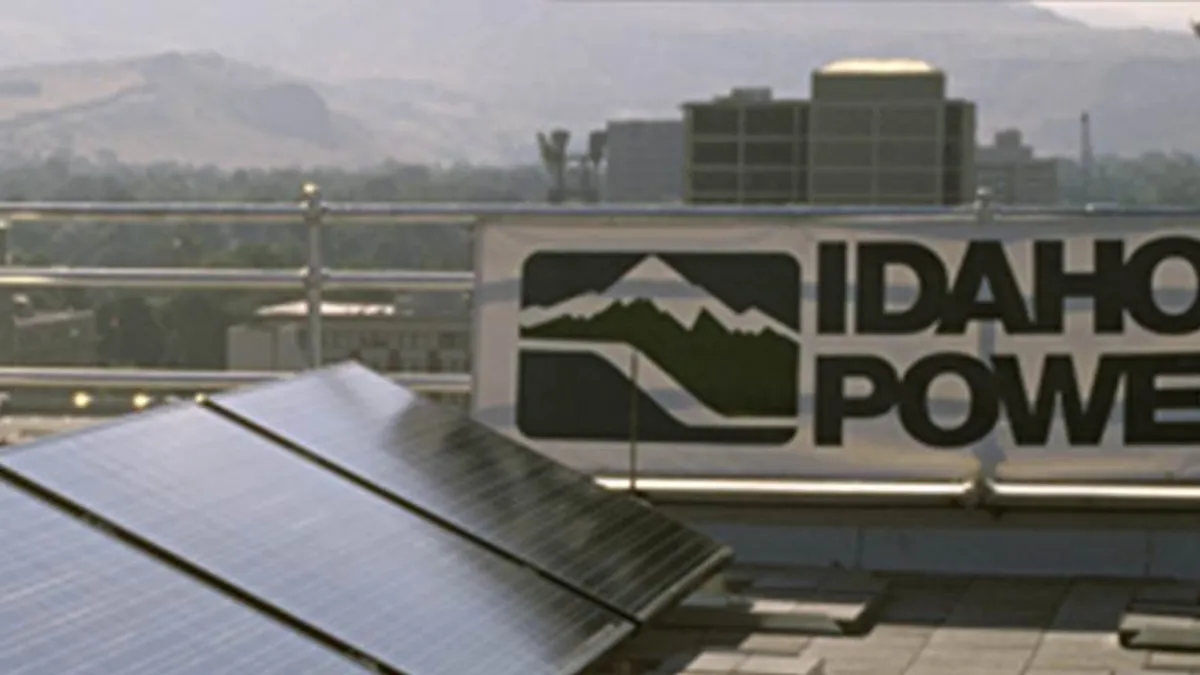Dive Brief:
-
Idaho Power’s latest Integrated Resource Plan (IRP), submitted to state regulators at the end of December, proposes to phase out all coal-fired power by the end of 2028. The company’s 2019 IRP called for the use of coal to end by 2030.
-
Idaho Power expects to add more than 200,000 new customers by 2040 on account of the state’s rapid population growth, and plans to add 3,790 MW in new clean energy resources, including wind, solar and battery storage over the next 20 years to address growing power demand. The company also plans to deploy programs to reduce energy use during periods of high demand, according to a news release that accompanied the IRP.
-
Ben Otto, energy associate for the Idaho Conservation League, called the IRP a "positive outcome" following eight years of advocating for coal retirements. But he said the league was disappointed with the last-minute addition of plans for Idaho Power to participate in the conversion of the Bridger Coal Plant to natural gas.
Dive Insight:
Idaho Power is among the latest utilities to accelerate plans to phase out coal generation, but its newly proposed IRP does not have the company on a path to meet its 2045 100% clean energy goal, according to Otto.
The latest IRP proposes to exit the utility’s last source of coal-fired energy two years ahead of the 2030 target established in 2019. To replace it and keep pace with demand, Idaho Power proposes to deploy more than 3,000 MW of new renewable energy resources, and will participate with PacifiCorp in the conversion of the Bridger coal plant to natural gas by 2024. Idaho Power proposes to exit the Bridger plant entirely by 2034.
Kevin King, board chair of the Idaho Clean Energy Association, said the outcome was unusual for an IRP process in a state with no legislative mandates to end coal generation or reduce carbon emissions.
"Idaho Power’s plan to acquire thousands of megawatts of wind and storage because it’s affordable and reliable, and not by government mandate, is a big takeaway for us," he said. "It’s certainly a step forward from years and years ago when the statement was clean energy is not valuable, so it’s come a long way."
The fact that the trend away from coal generation has accelerated in the face of the state’s rapid population growth is also encouraging, Otto said, and suggests that the trend away from coal is "durable" and will continue into the future.
Cassandra Koerner, assistant director of the Boise State University Energy Policy Institute, also saw the IRP as a signal that policy was just one of many factors driving coal retirements.
"State-level carbon policies have been rapidly impacting coal plant closures throughout the west," she said in an email. "Idaho Power’s shift toward more renewable energy sources demonstrates that economics are catching up with these technologies and allowing Idaho Power to move closer to its decarbonizing goals at a faster pace."
Because Idaho does not have any coal plants or mines within the state, the "impact from retirements … are not as significant as to states that depend on coal economically," Koerner said.
However, Otto noted that the IRP still does not align with Idaho Power’s goal to achieve 100% clean energy by 2045.
"They say they’re waiting for innovation and have a goal and a glide path, but this plan doesn’t get them there," he said. "There’s a gap [in terms of] what they are going to do with the existing gas fleet. That’s not in the plan, and that’s something to consider."
Plans to convert the Bridger plant to gas, rather than exiting from it entirely, were added to the IRP at the last minute, allowing stakeholders limited time for discussion, Otto said. He said the Idaho Conservation League planned to continue the dialogue around that decision in the future as the focus shifts from eliminating coal to eliminating natural gas. But overall, he said, the direction outlined in the new IRP was encouraging.
"It’s a really, really great result in a fast growing state without any legislative mandate," he said. "What we see is, just following the numbers [leads to] a rapid clean energy transition."













